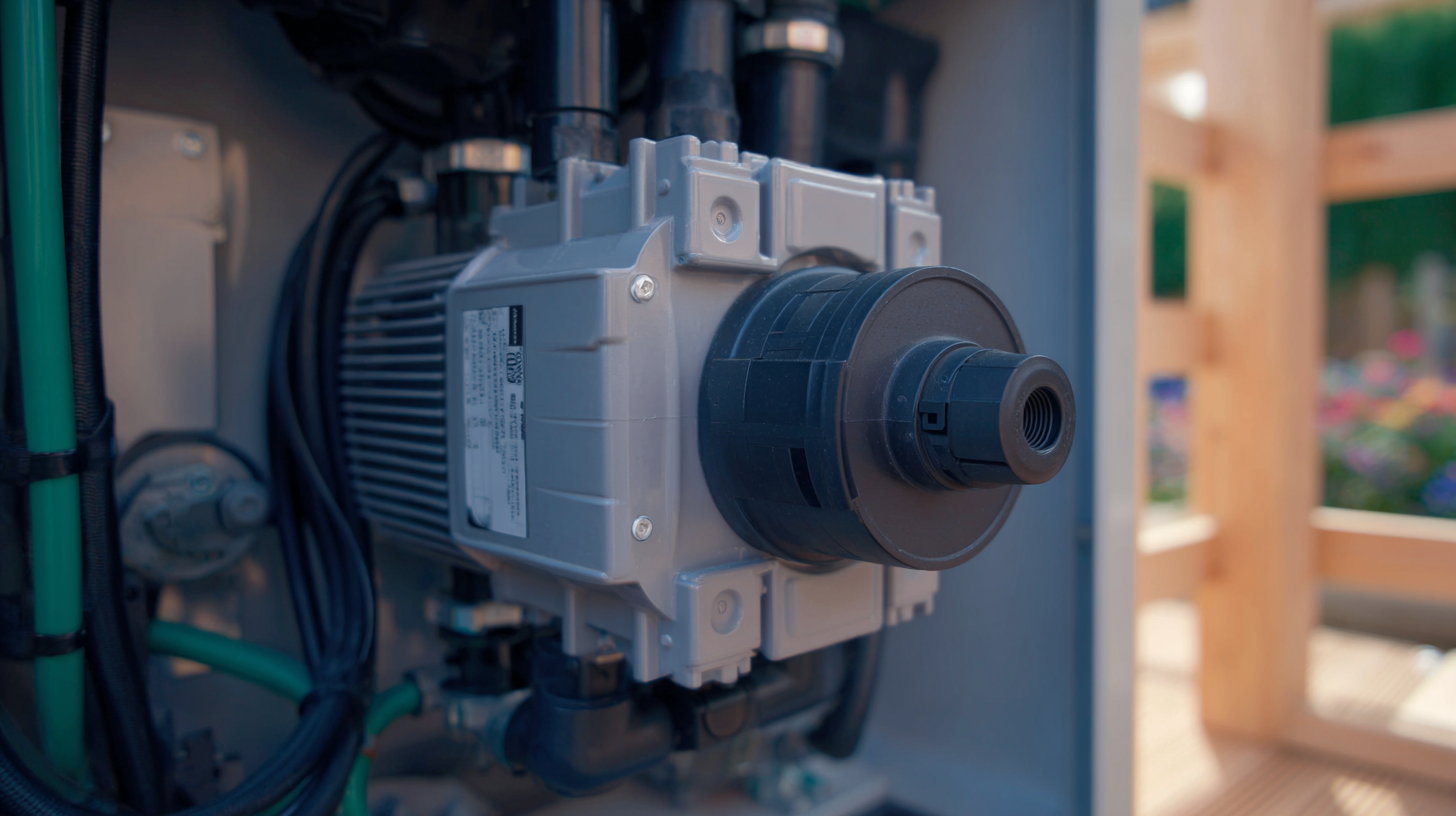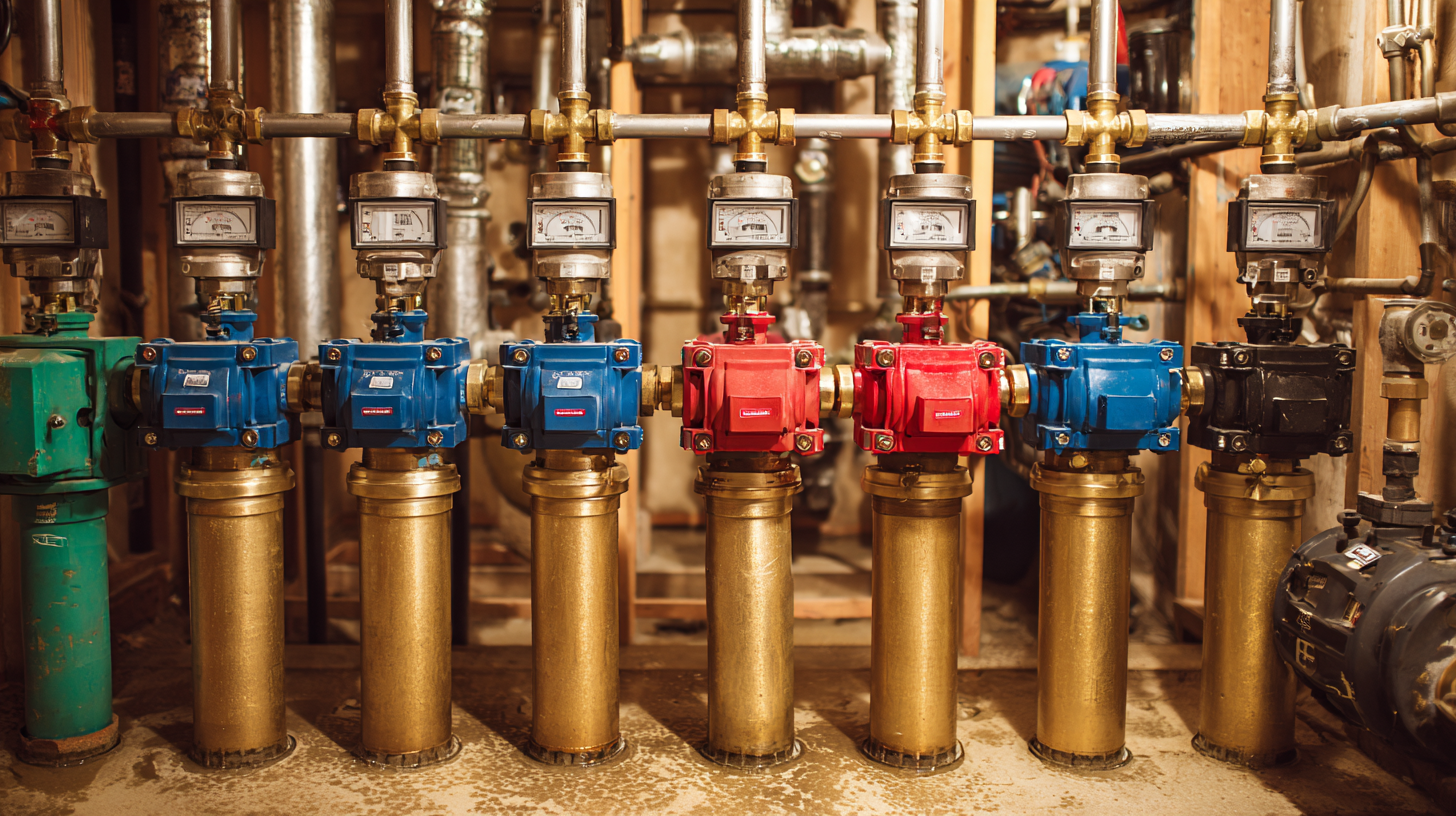 +86 13794985240
+86 13794985240
Leave Your Message
-
 CONTACT NUMBER
CONTACT NUMBER -
 CONTACT NUMBER
CONTACT NUMBER -
 CONTACT NUMBER
CONTACT NUMBER



In today's fast-paced industrial landscape, the demand for efficient and reliable water management systems has led to a significant increase in the use of Electric Pumps. According to a report by Grand View Research, the global electric pump market was valued at approximately $45 billion in 2021 and is expected to grow at a compound annual growth rate (CAGR) of 4.5% from 2022 to 2030.

With numerous types and specifications available, selecting the right electric pump can be a daunting task. Various factors, such as performance requirements, energy efficiency, and application-specific features, must be carefully considered to ensure optimal functionality.
This essential guide will delve into the key aspects of electric pump technology, offering a comparative analysis to aid in making informed decisions tailored to your individual needs.
When selecting the right electric pump for your specific needs, it's essential to understand the various types available in the market. Electric pumps are primarily classified into three categories: centrifugal pumps, positive displacement pumps, and submersible pumps. According to a recent industry report by MarketsandMarkets, the global electric pump market is projected to reach $62.8 billion by 2025, driven by the increasing demand across sectors such as water and wastewater management, agriculture, and industrial processes.
Centrifugal pumps, known for their efficiency in moving fluids at high flow rates, are ideal for applications involving water transfer and irrigation. In contrast, positive displacement pumps are perfect for handling viscous fluids due to their ability to move a fixed volume per cycle. Submersible pumps, which are designed to function underwater, are often utilized in drainage and sewage applications.
**Tips:** When choosing an electric pump, consider the fluid type, viscosity, and the required flow rate. Additionally, ensure the pump's material is compatible with the fluid to prevent corrosion and prolong its lifespan. Don’t forget to assess energy efficiency ratings, as this can significantly impact operational costs over time. Make informed decisions to optimize both performance and energy consumption.
When selecting the right electric pump for your needs, several key factors must be considered to ensure optimal performance and efficiency. First and foremost, understanding the specific application for which the pump will be used is crucial. Different pumps are designed for various tasks—from transferring fluids to providing cooling solutions in electric vehicles. For instance, the growing electric coolant pump market indicates an increasing demand for specialized pumps in the automotive sector, which underscores the importance of identifying the pump type that aligns with your project requirements.
Another vital consideration is the pump's efficiency and energy consumption. With ongoing discussions around renewable energy and energy-efficient technologies, choosing a pump that minimizes energy use can significantly affect long-term operational costs. As research in areas such as integrated photovoltaic-thermal systems and industrial heat pumps progresses, consumers should prioritize pumps that utilize these advancements. Additionally, factors such as size, flow rate, and operating conditions should be carefully evaluated to ensure that the chosen pump not only meets immediate needs but also supports sustainability goals within broader energy management contexts.

When considering the purchase of an electric pump, it's essential to compare submersible and surface pump options to determine which best suits your specific needs. Submersible pumps, designed to operate underwater, are highly efficient for draining and transferring water from deep locations, making them ideal for applications such as irrigation and dewatering in challenging environments. However, their installation can be more complex, requiring careful attention to depth and power supply.
On the other hand, surface pumps sit above the fluid source, drawing fluid up through suction. These pumps are generally easier to install and maintain, making them suitable for lighter applications, including garden irrigation and small-scale water supply. It's crucial to evaluate the lift and flow requirements of your project, as submersible pumps excel in higher lift scenarios, while surface pumps offer convenience for lower demands.
**Tips**: When choosing between a submersible and surface pump, consider your project's depth and fluid type. Ensure that the pump's specifications align with your requirements for efficiency and performance. Additionally, factor in the ease of maintenance: surface pumps may save you time and effort with routine checks compared to submersibles that require significant disassembly for access. Always consult with professionals if uncertain about compatibility and performance characteristics.
When selecting the right electric pump, it's crucial to understand the diverse applications across various industries. In agriculture, electric pumps play a vital role in irrigation systems, ensuring crops receive adequate water supply. These pumps improve efficiency and reduce labor costs, allowing farmers to focus on maximizing their yield. Moreover, the food and beverage industry depends heavily on electric pumps for processes like mixing, transferring, and bottling fluids. Their reliability and efficiency make them indispensable for maintaining quality and safety standards.
In the construction industry, electric pumps are often utilized for dewatering sites to keep them dry and safe for work. They help manage excess water during heavy rainfall or flooding, preventing delays and ensuring the project stays on track. Additionally, electric pumps are essential in the manufacturing sector for moving various liquids through production lines, enhancing overall productivity. Understanding these applications is key to choosing the right pump, ensuring it meets the specific needs of your industry.
| Application | Flow Rate (GPM) | Pressure (PSI) | Power Source | Typical Use Case |
|---|---|---|---|---|
| Agriculture | 25 | 40 | Electric | Irrigation |
| Firefighting | 50 | 100 | Electric | Fire Suppression |
| Industrial | 100 | 150 | Electric | Liquid Transfer |
| Home Use | 15 | 30 | Electric | Draining Water |
| Manufacturing | 75 | 120 | Electric | Process Cooling |
 When it comes to ensuring the longevity of your electric pump,
regular maintenance is essential. According to a report by the
Hydraulic Institute, proper upkeep can extend the lifespan of pumps by up to
25%. This not only saves on replacement costs but also minimizes downtime, which can be particularly
critical in industrial applications. Routine checks, including inspecting seals for wear and tear, lubricating
bearings, and cleaning filters, should be on every owner's list.
When it comes to ensuring the longevity of your electric pump,
regular maintenance is essential. According to a report by the
Hydraulic Institute, proper upkeep can extend the lifespan of pumps by up to
25%. This not only saves on replacement costs but also minimizes downtime, which can be particularly
critical in industrial applications. Routine checks, including inspecting seals for wear and tear, lubricating
bearings, and cleaning filters, should be on every owner's list.
Furthermore, monitoring the pump's performance metrics is crucial. The American Society of Mechanical Engineers (ASME) suggests that operators should keep an eye on the pump's flow rate and pressure levels. Variations from the standard range can indicate underlying issues that, if left unchecked, might lead to costly repairs. Maintaining optimal operating conditions, such as ensuring the pump is not over- or under-loaded, enhances efficiency and reduces the risk of premature failure. Adopting these maintenance practices will not only prolong the service life of your electric pump but also optimize its performance for your specific needs.
